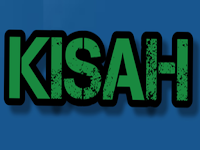Snapshot Today: How Has Business Aggregation Evolved?

Since the beginning of 2020, online business aggregators have gained attention from investors and media outlets. Since then, high-profile businesses known as Amazon FBA aggregators have come to the forefront after the digital aggregation market reached USD 14 billion, according to Entrepreneur. Professionals in this industry speculate that digital aggregation is just getting started as competition grows between ecommerce companies and other “digital businesses”.
Table of Content
The Current Climate of Business Aggregation
During the pandemic era, ecommerce boomed. Everything under the sun, from shopping and communication, to school and work–all had to be done digitally. During this time, aggregators like Berlin Brands Group and Razor Group acquired ecommerce businesses (like Amazon sellers). With each acquisition, these aggregators furthered their larger strategy to simultaneously grow a group of assets.
The success of this business model kept investors’ money flowing to other aggregators—especially those selling on the Amazon marketplace. In 2021, 41% of all the US ecommerce sales occurred via Amazon.
While ecommerce aggregators like Thrasio purchased profitable companies with already-cultivated customers, other aggregators also emerged. Businesses known as “digital demand aggregators” pushed a slightly different business model–with their goal to acquire, maintain, and grow content websites. For these firms, the most appetizing sites on the shopping list receive a large amount of organic search. By purchasing these sorts of sites from thought leaders and content creators, aggregators can further grow a site’s brand as well as the income channels.
In 2021, a startup team known as TreasureHunter hit this “business roll-up” market. This was another example of an aggregator concept whose team differentiated themselves from Amazon FBA aggregators. TreasureHunter’s team was assembled to buy up digital equity in online areas that influenced ecommerce. In 2022, this team is purchasing content websites in many different categories from entrepreneurial content creators who are experts in their respective niche(s).
“With TreasureHunter, we want to revolutionize the digital content segment and give small websites and blogs the exact tools, resources, and partners we could have only dreamed of back when we established our first blogs in 2013,” said Benjamin Schardt the Co-Founder & Co-CEO of TreasureHunter who started his entrepreneurial experience with his own blog.
Business Aggregation Goes Digital
It’s a standard business practice for large corporations to buy-up or “roll-up” smaller entities. However, the business environment in the post-pandemic’s “new normal” has produced several large digital business aggregators in one short timespan.
Digital roll-ups “are the aggregation of smaller companies into larger firms, creating a potentially compelling path for equity value,” according to TechCrunch. “…roll-ups often achieve much greater exit multiples, known as ‘multiple arbitrage,’ so it’s no surprise that the trend is making its way online.”
Firms like TreasureHunter acquire niche content sites in the form of sports blogs, digital recipe sites, travel guides, etc. Most importantly, these content websites are usually created by truthful individuals who want to distribute content about their favorite hobby or passion. In the last few years, these content creators have been rewarded by steady growth in their advertising revenue and most recently, the attention of bigger corporations.
Aggregators buy these types of websites in order to develop them into well-oiled, revenue-producing machines. Using larger teams and budgets, aggregators uplift output around tasks that individual blog owners often struggle to complete. If this is to work properly, aggregators must cut the operating costs of the blogs they buy, increase advertising revenue, and continue to create helpful content that satisfies a site’s unique audience.
“We are leveraging the strong collaborations with respect to marketing, advertising, content management, and creating synergies between technology our teams are using to enable massive growth,” continued Schardt. “This is growth that would not be possible for the asset, stand-alone.”
What Does Aggregation Mean for the Future of the Internet?
In 2019, ecommerce ad spending in the United States reached USD 12.5 billion, according to Statista. In 2021, the total US ecommerce sales reached USD 960.1 billion, which is an 18.3 percent year-over-year increase, according to Oberlo. As a result, companies like TreasureHunter believe that controlling areas of the internet where ecommerce is influenced will continue to be profitable.
Given the 32 million (and counting) active content sites with audiences across the US and Europe, aggregators predict competition growth and a greater value for digital assets with loyal audiences. Plus, these corporations bet that ecommerce sales, as well as advertising revenue will continually increase. Crunching numbers, the firms that are rolling-up online entities are also working to build higher quality sites as the internet landscape undergoes further evolution.
Using investor funding gained, aggregators will onboard newly-acquired assets–hoping their business model will achieve over the next 5-10 years. These companies aim to control “digital property” on the internet, just like the Amazon FBA aggregators have gained a large portion of control inside Amazon’s online marketplace.

